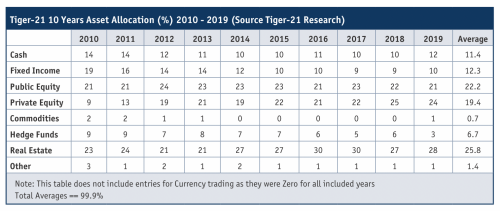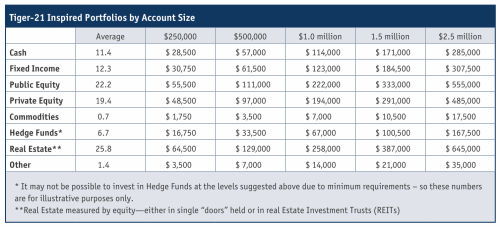All Things Different: Success Leaves Clues

 Tiger-21 is an investment networking and support organization, dedicated to helping investors with investible assets of $10 million or more. Often, club members are small to medium-sized business owners who come to realize and benefit from the shared learning experience, figuring out how to best protect and grow their family nest eggs. I recently had the pleasure of speaking to the chairman of the Toronto Chapter, Leon Goren.
Tiger-21 is an investment networking and support organization, dedicated to helping investors with investible assets of $10 million or more. Often, club members are small to medium-sized business owners who come to realize and benefit from the shared learning experience, figuring out how to best protect and grow their family nest eggs. I recently had the pleasure of speaking to the chairman of the Toronto Chapter, Leon Goren.
I engaged Leon with a hypothesis: is it possible for those of us without $10 million to learn from those who have more? Can we structure our investments and financial affairs, emulating the a-typical “Tiger” to invest like them? The conclusion I came to at the end of our hour together online was, yes and no.
I very much appreciated my time with Leon and, in particular, learning more about the organization and the surprising similarities many Canadians have with the members of this networking club.
As shared, the average Tiger-21 member is a business owner who has either just sold their business or has somehow monetized their holdings by way of a public offering of some kind. They would also include wealthy individuals who have been fortunate enough to save over the years or even inherit their wealth. Asset base aside, however, Leon very clearly pointed out that the average “Tiger” faced many of the same challenges that we all face.
Specifically, “before-Tiger” most members have little insight into investing and the public and private markets where investments are offered. Additionally, members often ask: “Do I have the right advisor(s) and do I need more than one?” The strength of the organization comes from the joint learning opportunities and the dialogue between new and more seasoned members where “someone in the room” has learned the lessons and has the advice or connections to share making life easier from those needing to make an informed choice.
Speakers are invited to attend Tiger-21 meetings and present their ideas. A wide variety of topics are presented including many seminars on family, travel, economics, and geo-political matters in addition to traditional investment ideas. Surprisingly, Leon shared with me that even the “bad” presentations bring much value to the room. Club members dissect and debate the merits of each speaker’s presentation or product in detail immediately following their time by comparing experiences with similar strategies. “Sometimes knowing what to avoid can be just as valuable a learning experience.”
Of interest to my hypothesis however was: how do members allocate their existing investment funds, and should we do the same?
Tiger-21 has, for many years, published their recommended asset allocation on their website and the club’s founder and chairman, Michael Sonnenfeldt (as well as all the club’s local chairs in Canada, Switzerland the U.K. and in the U.S., including Leon) appears in print, online and on TV (Bloomberg, CNBC etc.) to promote their approaches to financial literacy for the well-heeled and, by default, for the rest of us.
CMS readers understand that asset allocation is a personal decision, developed on their own or with the guidance of advisors or online robo-advisor tools. Public and private pension and endowment funds have long held that asset allocation is a tactical decision or is mandated by investment rules that reflect the needs of their members or clients as a group. Investors with $10 million can easily think in like terms given the size of their families’ wealth and ability to withstand market volatility provided they take care to make decisions wisely. Let’s take a look.

While the club is reserved for those with $10 million in investible assets, many members still count the wealth they’ve built in their homes and private businesses into this allocation model. Others might keep their investment assets strictly separate. You will need to decide for yourselves and your families which allocation model is best.
To give you some indication of what sample portfolios might look like for you, I have created the second table below. The data reflects only total family net liquid investment assets (single or couple only) and does not include principal residence or ownership of a private business. I had to draw the line somewhere.

That leaves us with the question: how do you select investments in the rest of the asset classes mentioned above? Next time, we’ll look at each of the specialty asset classes in the Tiger-21 model, discuss whether they might be appropriate for you and how you can get into those specific investment vehicles.
Bob Carter, GBA, ALMI, CIM is the author of CatchUpInvesting and an experienced investor holding real estate, public and private equities. Bob is a former licensed Financial Advisor with a major independent Bay St firm and today serves as a Regional Vice President of Sales for a leading Canadian life insurance company. The views expressed are those of the author and not his employer or Canadian MoneySaver Magazine. He can be reached by email at bob@catchupinvesting.ca.

